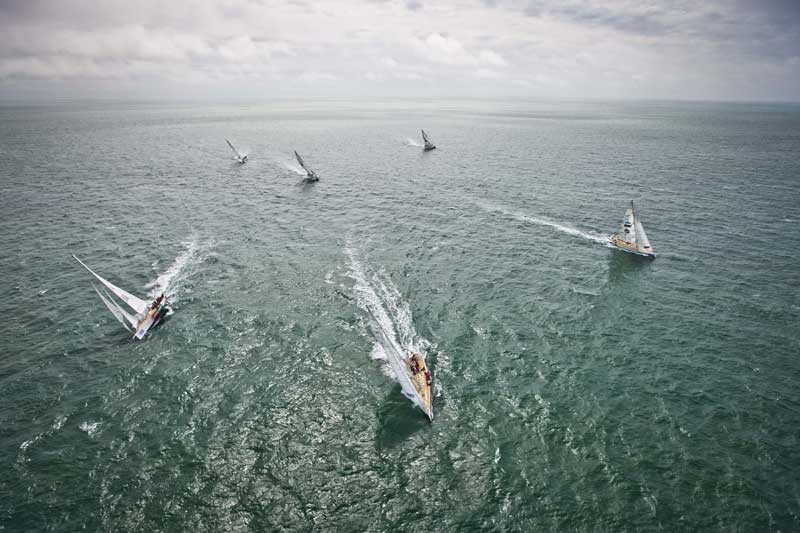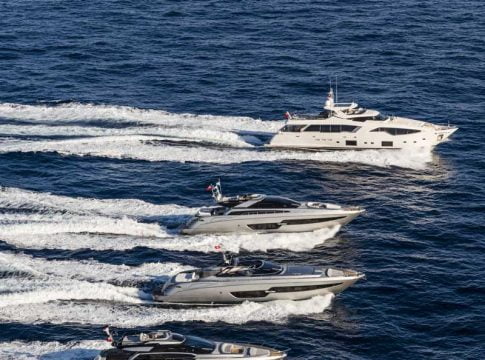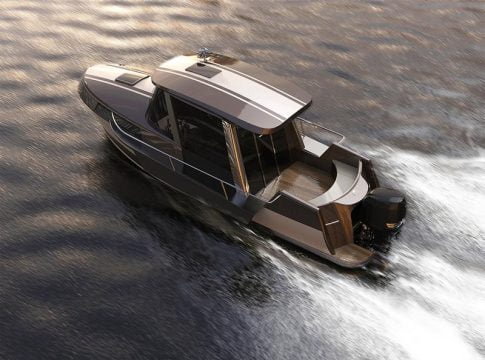A race with no equal; and that is by no means an exaggeration. With 8 legs covering 40,000 nautical miles and 16 individual races, Clipper Round the World Yacht Race is designed to circumnavigate the globe following the steps or rather the waves of RKJ, Sir Robin Knox-Johnston, Clipper Race Chairman and a legendary yachtsman. Words by Eva Metis*
It was more than 45 years ago when a young RKJ and his humble yet seaworthy Suhaili set sail to race nonstop around the world. Nine of the best sailors in the world entered the 1968 Sunday Times Golden Globe Race, yet RKJ and Suhaili were the only ones to make it to the finishing line some 312 days later. I utterly enjoyed reading about this journey in his first book, “A World of My Own”.
He recommended that book to me few months ago when I asked him during our first interview as he was just back from his latest solo race. Last November, 2014, at the age of 75 and with a few rather silly people doubting him, he entered yet another tough race, the French solo Route du Rhum, and grabbed a podium place after taking his Grey Power, an Open 60, from St Malo in France to Guadeloupe in the Caribbean in 20 days on an average speed of 9.4 knots. While I was writing the article, he was 3 times British Yachtsman of the Year. By the time it was published, in February, the information was outdated; he was by then voted 4 times Yachtsman of the Year, gaining the 2014 title for his Route du Rhum feat.
From the little I know RKJ, three things characterise him; Endurance, Focus and Determination. He once advised me that the lack of focus leads to mistakes and then to failure. This focus has been the prevailing wind that kept his sails full all these years. When he talks about the Clipper Race his face glows. He started Clipper Ventures Plc in 1995 with William Ward, the CEO who helped the non-sailing side of things by seeing the business perspectives. The aim is one; to help ordinary people achieve something extraordinary and since the first race in 1996, RKJ encouraged more than 3,500 amateur sailors to take on the world’s oceans through the Clipper Races. Clipper Race takes place every two years and this year is the 10th anniversary.
To mark the events of the 10th anniversary, a yacht was gifted to UNICEF to help raise global awareness and essential funds for the children in need around the world.
By the time this article is published, the world’s largest matched fleet of ocean racing yachts will be reaching Brazil. Starting date for the 2015-2016 Clipper Round the World Yacht Race is the 30th of August and on that Sunday, 12 amazing 70-foot one design ocean racers will sail proudly through Thames starting from St Katharine Docks. I remember watching them from my balcony two years ago when I was still at Canada Water opposite Canary Wharf. They are beautiful! Stripped of all luxuries and designed by the renowned naval architect, Tony Castro; they enjoy twin helms, twin rudders and a 6-foot bowsprit which allows the inclusion of three large asymmetric spinnakers and a suite of Yankee headsails. Boat speed can reach up to 35 knots!
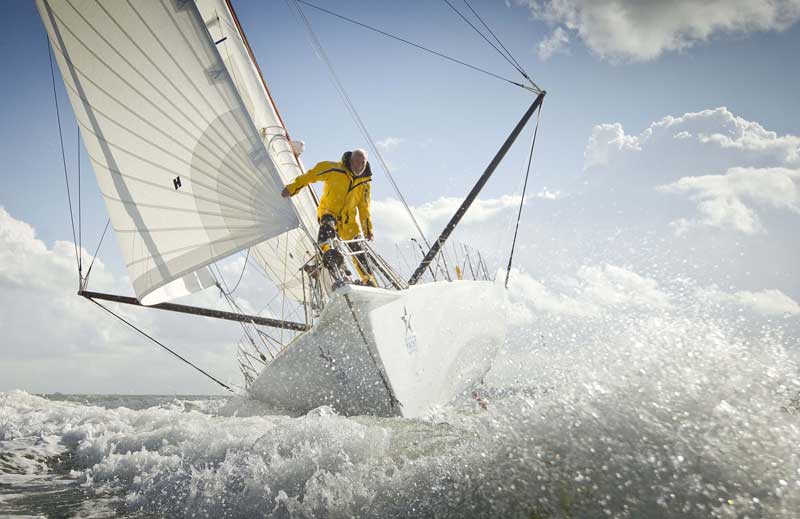
With identical boats and budgets, no one has a head start and the winners will be the ones who keep their focus the longest.
The scoring system is a Formula 1-style scoring for the 16 individual races. The winner of each race is awarded 12 points, the second 11 and so on down to 1 point for the twelfth. The yacht with the highest cumulative points wins the Clipper Race Trophy. The teams also gain bonus points at strategic Scoring Gates, Ocean Sprints and by being stealth. Points can be lost by infringing the Racing Rules, Sailing Instructions or by damaging boat equipment or sails. Penalties are final.
The Race
The 1st leg starts from London and ends in Rio covering 5,200 NM. The biggest challenges: the tides, Biscay, where to pass the Canaries and of course the Doldrums.
The 2nd leg between Rio and Cape Town offers 3,400 NM of trade winds, spinnakers and the notorious Southern Ocean.
The 3rd leg has 4,750 thrilling NM in the famous Roaring Forties and the Southern Ocean from Cape Town to Albany in Western Australia. The weather gets colder and the currents stronger. That’s where you can expect 30 knots of boat speed and 80-foot swells.
4th leg’s 4,328 NM are testing in every way. Back in the Roaring Forties and below the 40th parallel, further south than any other leg, you get to meet the Great Australian Bight with the unforgiving coasts and the Tasman Sea. The famous Rolex Sydney Hobart Yacht Race (RSHYR) is also included.
The 5th leg is the longest, 6,300 gruelling NM from far south to north and across the Equator, from Australia to China. Tough beat north into prevailing winds for a start, tropical temperatures with heat and light winds while crossing the Equator and finally the South China Sea with north east monsoon winds and spinnakers.
Leg 6 with 5,700 NM conquers the mighty Pacific with boat speeds of 30 knots, grey seas and waves the size of buildings. The first waypoint is the southern tip of Japan as you sail from China to the US.
Leg 7 has 5,400 NM and 3 races so it is very tactical. Use the inshore current risking fickle winds or go offshore with no aid by the current but more consistent winds? High temperatures and light winds are expected further south so loads of trimming. Tropical heat, trade winds and squalls through the blue waters of the Caribbean in the end.
Leg 8 is the last and its 3,350 NM offer the last chance for a podium place. The weather is mixed. Heading north you check for a helping push from the Gulf Stream and a further check to understand when it gives way to the cooler Labrador Current. The mixture in the seawater often produces unpredictable fog banks. If you have seen the film “Perfect Storm” then you know what that part of the Atlantic can treat you with.
Few lucky ones get to circumnavigate the earth. Others select a leg or more. Minimum age is 18 and there is no upper age limit, following the example of Sir Robin. Everyone, no matter their previous experience, will undergo a rigorous 4 week training that covers everything from sail and boat maintenance to sea survival and racing tactics. The skippers get also a tough and elaborated training so that they all meet RKJ’s standards to guarantee safety along with racing thrill.
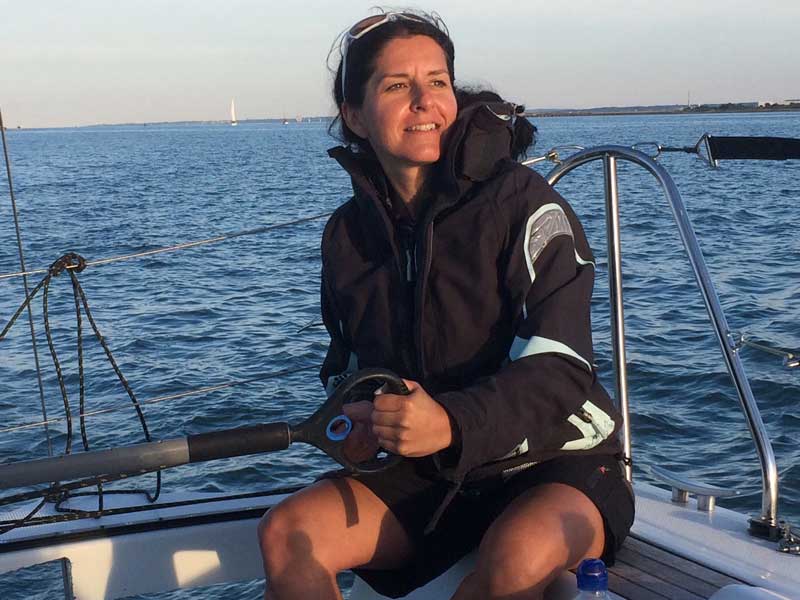
* Eva is a journalist and a sailor. After taking her Master’s Degree in International Journalism with Merit from the University of Westminster, she backpacked around the globe with her cameras visiting places like Tokyo, Australia, SE Asia and China. She later became a travel journalist and a chief editor for travel magazines in Greece. Six years ago, she returned to London heading the organising of executive forums in London, Brussels, Prague, Shanghai, Singapore, Miami and Brazil. A year ago, she moved from London to Southampton to be close to her sailing yacht, Nereid, and start up her company “Alternative Yachting”. She is passionate about sailing, travelling and life in general. In her free time, she continues to pursue her other passion, writing, by freelancing as a journalist.


